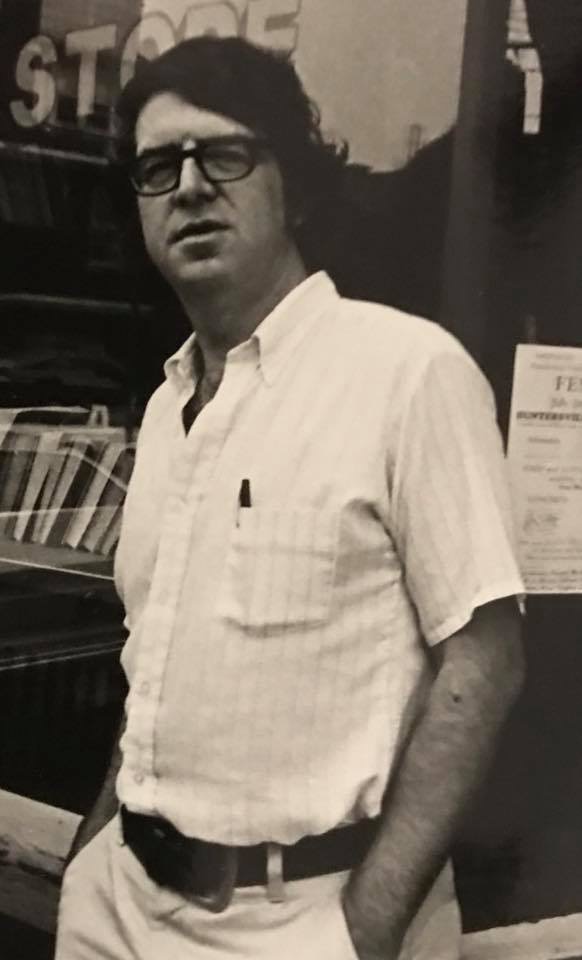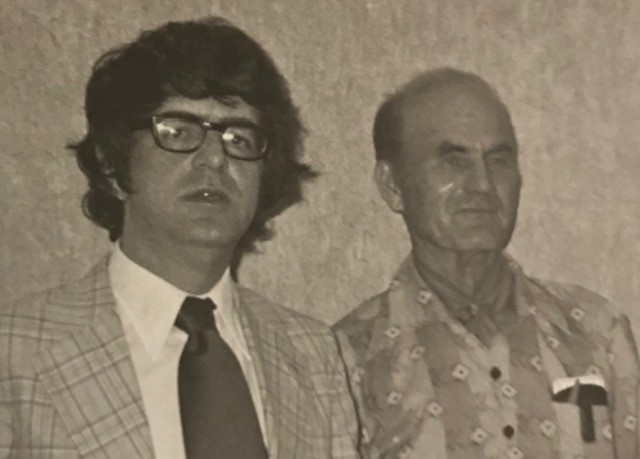In a 1990 interview with Phillip Obermiller, Ernie Mynatt discussed some of the founding activities of the Urban Appalachian Council in Over-the-Rhine. Over the course of their conversation, Mynatt offers an observation that seems to me to be more far-reaching than it first appears. Regarding how he was able to reach Appalachians in Over-the-Rhine, particularly young people, when all the mainstream efforts of social workers had failed, Ernie Mynatt explains: “You’ve got an image and the thing that hurts … Over-The-Rhine and inner city [people] in any city, is the non-association, [the lack of an]….image of association…”
We need to tease this out a little. Ernie Mynatt is certainly referring to the image of Appalachians from outside the Appalachian community. But, in context of the interview, he is also referring to the fact that urban Appalachians were lacking a system of relation among themselves and with the world around them. Social workers, high school principals, and yes, police and the judges who hired him—all of them failed because they lacked the ability to communicate with urban Appalachians, even as young urban Appalachians lacked effective ways of communicating with each other.
Mynatt states in this interview that young urban Appalachians had been rendered invisible in the urban environment they found themselves in and “they had become bleached out of all image of anything.” Ernie Mynatt was able to reach these folks by establishing forms of relation between himself and others, and by establishing relations to each other and the urban environment in which they lived. In this way, a feeling of being in the world that made sense could be created.
Ernie Mynatt’s insight here is that “who we are” is not determined by sociologists and political theorists, nor is it determined by any one voice from within a community. This “image” is something that comes into existence as it is created. It is a dynamic and shifting set of relations rather than static definitions no matter how these definitions are derived. Ernie Mynatt’s great insight is that relations among a people and the world they inhabit is a creative process rather than a system of fixed procedures and processes.
Poet, teacher and activist Bob Snyder, a protégé of Mynatt, developed this in much more complex terms in a 1982 essay, “Image and Identity in Appalachia,” when he explained that identity is formed “at the conceptual meeting ground” in which the image of who we are is created as the voices from within a community meet the “political circumstances” that come from outside. Snyder, in this case, built on some complex social and cultural theory, and he drew out a central thesis which is that the ways we come to communicate to each other and to the larger world around us depends on forms of relating that are creative. Perhaps it is this tense, conflicted, and ultimately creative space that offers the “image” that Ernie Mynatt was able to offer young urban Appalachians in the early 1960s in Over-the-Rhine.

Where Ernie Mynatt speaks of association and non-association, and Bob Snyder speaks of a kind of tension between the powerful voices that feel the need to name a people and the individual people who already know who they are, we can begin to see something more fluid at work than a hard and fast system of categories and ideas. I would suggest that the way to understand the experience of urban Appalachians, and maybe Appalachians in general, is relational rather than a fixed set of categories.
These systems of relations are part of what Appalachian poet, essayist and critic Michael Dowdy more recently conceives of with “the persona of the ‘Urbilly,’” who embodies “the explosive intersections of urban and hillbilly languages, energies, and lifeways.” This begins to sound a lot like urban Appalachians and they ways we have come to define ourselves within and against everything outside us, no matter what this “outside” may be.
In “Race and Radicalism in Appalachian Poetics,” Dowdy is writing mostly about the great Appalachian poet Don West, and the ways Don West situated his poetry and his activism in relation to people who are not at all Appalachian, but who share some of the same struggles and ideals as Appalachians. Don West was a poet and political organizer and activist. He was once referred to as the “phantom Appalachian revolutionary” by the scholar Jeff Biggers. What many people may not be aware of is the phantom Appalachian revolutionary aligned himself with the struggles and poetics of Puerto Rican revolutionary Lolita Lebron. This is not exactly a leap since the relation Don West established between Appalachians and Puerto Ricans was one in which people who have been systematically defined from outside had decided to speak for themselves. The politics and poetics of relation is something that makes it possible for otherwise unrelated peoples to find commonality where others would not necessarily see such common ground.
The spontaneous, creative, and even improvised relations that can occur as creative forces meet, conflict, find resonance, and continue to create is a thread stretching from Ernie Mynatt and the earliest days of the Urban Appalachian Council to actively revolutionary politics and poetics. And this same thread provides a creative flow of relations among urban Appalachians and the global cosmopolitanism of the modern life.
I did not come up with the idea of a politics and poetics of relation. This comes from a poet and writer from the Antilles named Edouard Glissant who wrote of “individuals living where solutions concerning the relationship of a community to its surroundings are not, or at least not yet, consented to by the community as a whole.” I think this completes the circle in some ways as we consider Ernie Mynatt’s belief that the “non-association” that vexed urban Appalachians was best dealt with through creative forms of relation.
As both a (largely silent) member of the Urban Appalachian Community Coalition’s Research Committee and the “official” UACC blogger, I have the honor of an intimate view of the many ways the Urban Appalachian Community Coalition works to establish relations with emerging communities that are coming to define our city. I have come to see this process as both a new one, specific to the 21st century, and one that stretches back to the earliest days of urban Appalachian advocacy. Our contemporary world is one that is always coming into being. And I believe the politics and poetics of relation is something that offers us one of the most productive ways of allowing communities to create themselves from within and in relation to each other.
Works referred to in this article:
Berea College Archives. Interview with Ernie Mynatt Elm Street Clinic December 18, 1990. https://berea.access.preservica.com/uncategorized/IO_e1e11ac6-bd9c-4346-9619-7d02143af8b0/.
Dowdy, Michael. “Race and Radicalism in Appalachian Poetics.” Poetry Magazine, January 2022. https://www.poetryfoundation.org/poetrymagazine/articles/156961/race-and-radicalism-in-appalachian-poetics.
Glissant, Edouard. A Poetics of Relation. Translated by Betsy Wing. Ann Arobor: the University of Michigan Press, 1997.
Snyder, Bob. “Image and Identity in Appalachia.” Appalachian Journal, vol. 9, no. 2/3, 1982, pp. 124–33.
Mike Templeton is a writer, independent scholar, barista, cook, guitar player, and accidental jack-of-all-trades. He is the author of the forthcoming The Chief of Birds: A Memoir. Available later this year from Erratum Press. Check out his profile in UACC’s new Cultural Directory. He lives in downtown Cincinnati with his wife who is a talented photographer. They spend their free time walking around the city snapping photos. She looks up at that the grandeur of the city, while Mike always seems to be staring at the ground.


I met Bob Snyder when I was a community organizer in Walnut Hills in 1967. I meth him through his wife, Peggy, who was a co-worker at Victory Neighborhood Services. I felt he was looking for an identity, hanging around with friends at a Black Bookstore. I introduced him to Ernie Mynatt and thus helped him connect to the Appalachian movement and his own identity in that. Ernie then recruited me to work in Over-the-Rhine. Together, with help from the Berea-based Appalachian Fund and Stuart Faber, we founded the Appalachian Identity Center, a youth program, on Walnut Street. Bob briefly directed that before moving on to an intellectual life by founding Antioch College’s Appalachian Branch in Beckley, WV. Pauletta Hansel was one of his students and collaborators on such projects as The Soup Bean Poets. Today we still feel the influence of these relationships going back to the 1960s in a thriving Appalachian literary scene in Cincinnati and beyond.